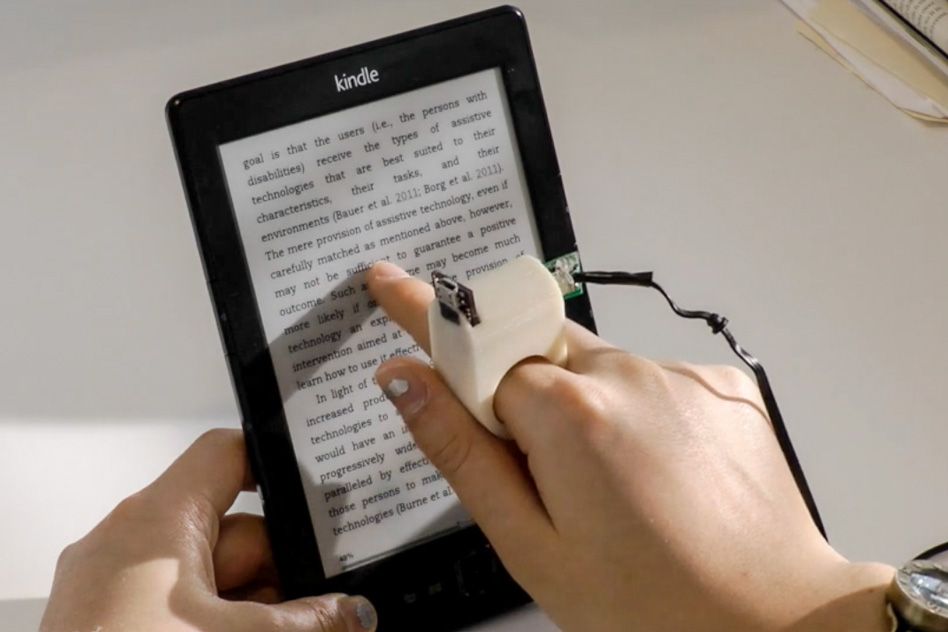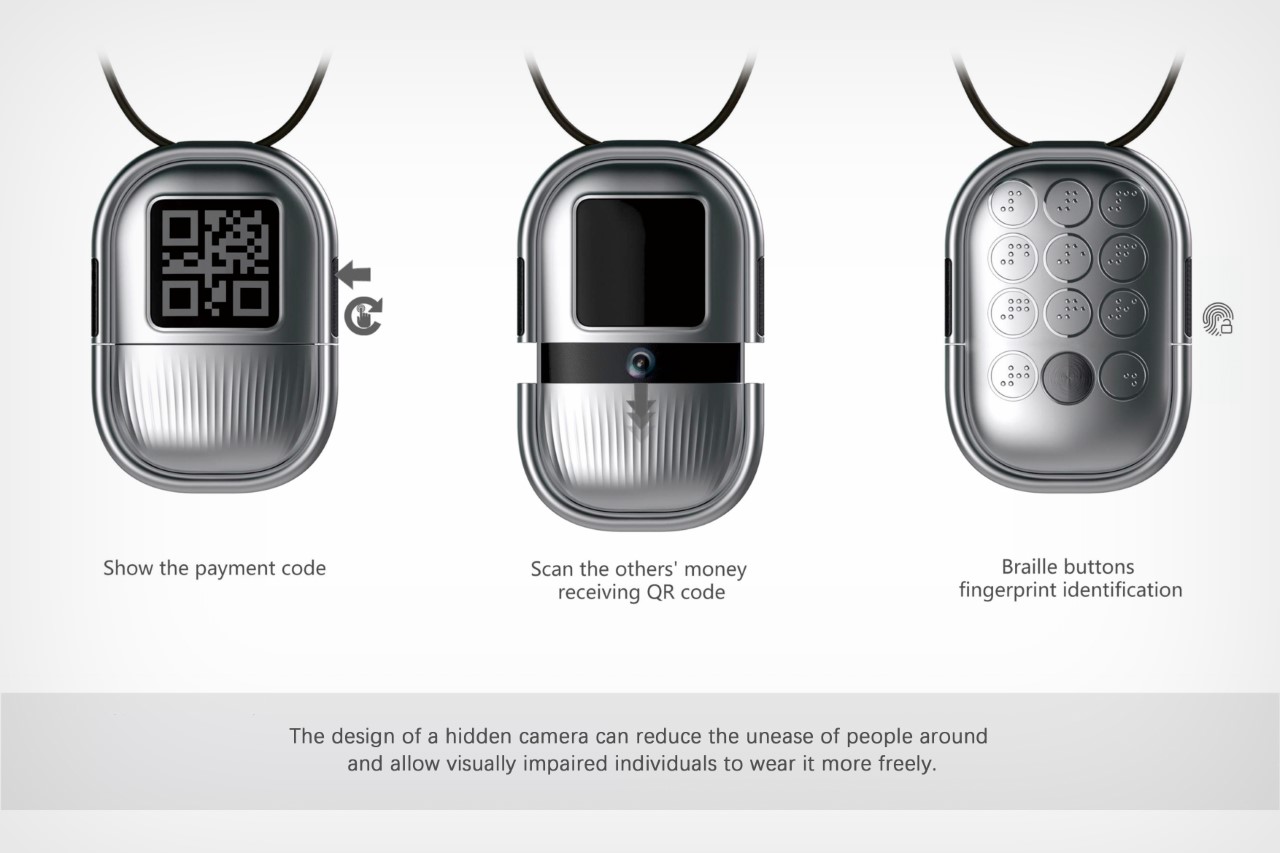Enhance Accessibility with Braille Displays and Notetakers
Wiki Article
Empowering Independence With Assistive Technology for the Blind
The integration of assistive modern technology right into the lives of people with aesthetic impairments represents a significant development in promoting self-reliance and self-sufficiency. From innovative display visitors to sophisticated smart walking sticks, these tools not just improve daily navigating and communication yet likewise empower customers to engage meaningfully in numerous elements of life. As we explore the myriad advantages and real-world applications of these innovations, it becomes critical to take a look at the hidden aspects that add to their efficiency and the potential for future advancements in this vital area.Overview of Assistive Innovation

The advancement of assistive technology is based in principles of inclusivity and empowerment. Advancements in software application, equipment, and sensory enhancements give individuals with alternatives tailored to their particular demands. From screen viewers that convert message to speech, to responsive gadgets that share information with touch, these tools transform the means individuals engage with their environments.
Along with practical applications, assistive modern technology cultivates greater social inclusion and engagement in numerous fields, including education and learning and work (Assistive technology for the blind). As research study and development proceed to progress, the potential for assistive technology to additionally enhance the lives of visually damaged individuals stays promising, leading the way for an extra equitable society where every person can thrive
Sorts Of Assistive Gadgets
A range of assistive tools have arised to sustain individuals with aesthetic problems, each made to satisfy specific demands and enhance everyday functioning. These gadgets range from low-tech options to state-of-the-art innovations, providing varied alternatives for customers.Low-tech tools consist of magnifiers and large-print materials that assist in reading and writing. Braille tools, such as Braille slates and styluses, enable responsive analysis and communication. Orientation and movement aids, like white canes, aid customers browse their atmosphere safely.
On the greater end of the range, electronic magnification systems and display viewers use considerable support. Electronic magnifiers enable individuals to expand text and photos on displays, while screen viewers transform digital content right into manufactured speech, assisting in access to information on smart devices and computer systems.
Mobile phone applications also play a critical function, offering attributes like message acknowledgment and navigation aid. Wearable innovation, such as clever glasses furnished with enhanced reality, is arising as a promising device to improve situational understanding.
Benefits of Assistive Modern Technology
The integration of assistive technology dramatically enhances the quality of life for individuals with aesthetic disabilities. These technologies encourage customers by advertising self-reliance, allowing them to navigate their atmospheres better and perform everyday jobs with greater simplicity. As an example, screen visitors and magnifying software application permit individuals to gain access to digital info, promoting instructional and expert opportunities that may have formerly run out reach.Furthermore, assistive devices such as wise canes and general practitioners applications give real-time navigation support, enhancing flexibility and safety. This enhanced autonomy not only boosts self-esteem but likewise encourages social involvement, allowing users to participate even more totally in their communities.
Assistive innovation also assists in interaction, assisting customers get in touch with others through voice recognition and text-to-speech applications. This capability is vital for maintaining connections and accessing important information.
Additionally, the modification choices available with numerous assistive innovations ensure that customers can customize devices to their particular demands, even more boosting usability and effectiveness. In general, the advantages of assistive technology for people with visual impairments are extensive, advertising an extra inclusive culture where everyone can seek their aspirations and goals.
Study and Success Stories
Highlighting the transformative effect of assistive modern technology, many instance research studies illustrate how individuals with visual disabilities have actually successfully integrated these devices into their every day lives. One engaging example includes an university student that utilized display reading software application to browse on the internet sources and scholastic products effectively. This technology not only promoted her education and learning however likewise boosted her self-confidence in taking part in discussions and group projects.One more study features an expert who uses a smart device application designed for navigation and object recognition. By utilizing this application, he has regained autonomy in both his personal and job environments, allowing him to commute independently and engage with coworkers better.
Additionally, a senior citizen shared her experience with braille e-readers, which enabled her to access a huge variety of literature and stay gotten in touch with her area through publication clubs.
These success stories underscore the essential role of assistive innovation in cultivating self-reliance, improving lifestyle, and promoting social combination for individuals with visual impairments (Assistive technology for the blind). By embracing these ingenious devices, individuals can get over obstacles and take possibilities that add to their professional and individual fulfillment

Future Trends in Assistive Technology
Development in assistive innovation is poised to redefine the landscape of assistance for people with visual problems. Arising fads emphasize the integration of expert system (AI) and artificial intelligence, which boost the capability of gadgets that assist with navigating and info availability. AI-driven applications are now click resources capable of analyzing visual data in real-time, allowing individuals to engage with their setting a lot more individually.Moreover, the development of wearable innovation is advancing rapidly. Smart glasses geared up with augmented truth (AR) can offer audio descriptions of surroundings, changing how users engage with public areas. These devices not just advertise freedom however additionally foster social inclusion.
Furthermore, the Internet of Things (IoT) is making homes smarter, permitting seamless connectivity review in between daily home appliances and assistive tools. This connection equips individuals by making it possible for voice-activated controls and automatic actions tailored to private demands.
Verdict
In final thought, assistive innovation plays an essential function in empowering individuals with visual impairments by improving their self-reliance and interaction with their environments. The diverse variety of applications and devices offered not just promotes navigation and communication yet also promotes social integration and possibilities for specialist and individual development. As innovations continue in this area, the potential for boosting the high quality of life for those with visual problems will broaden, cultivating greater autonomy and empowerment.
Report this wiki page